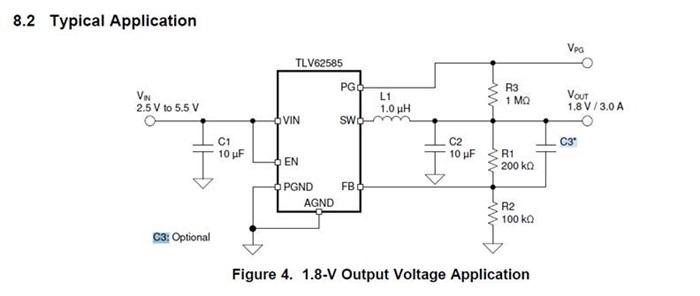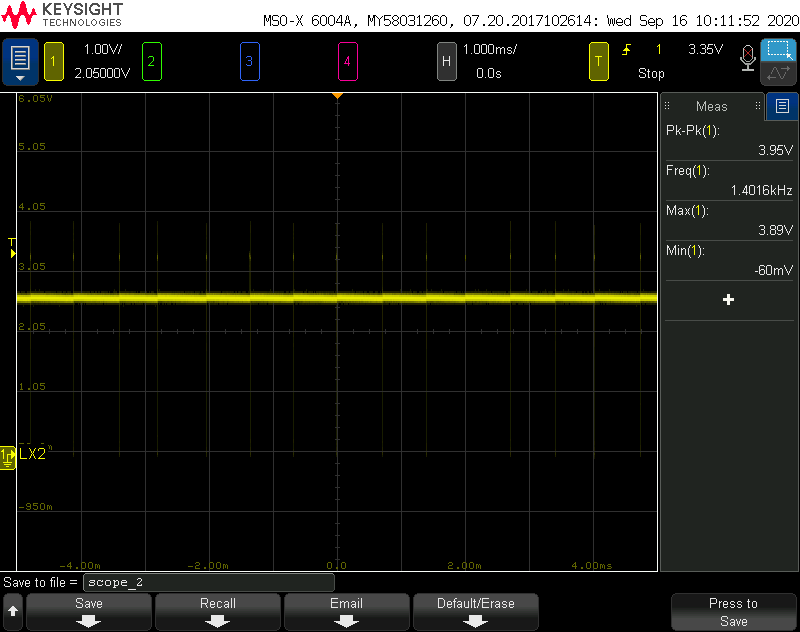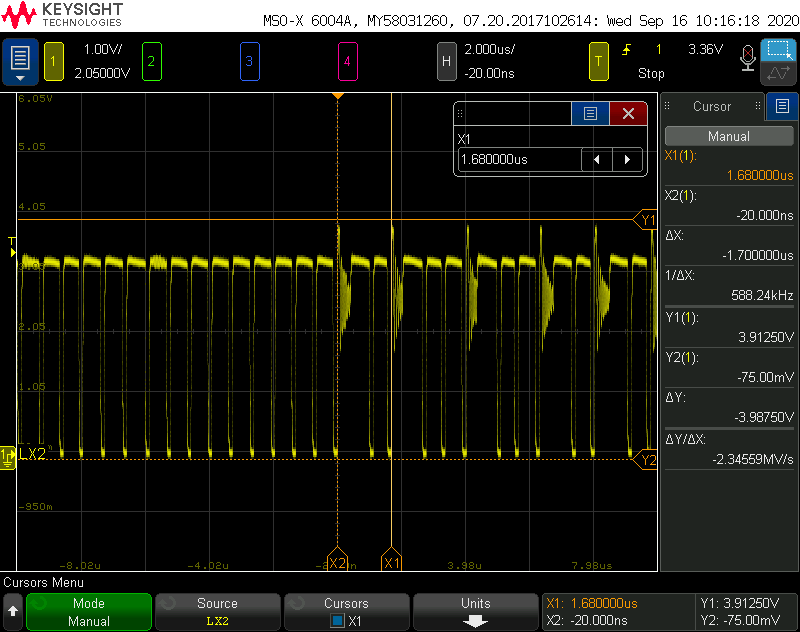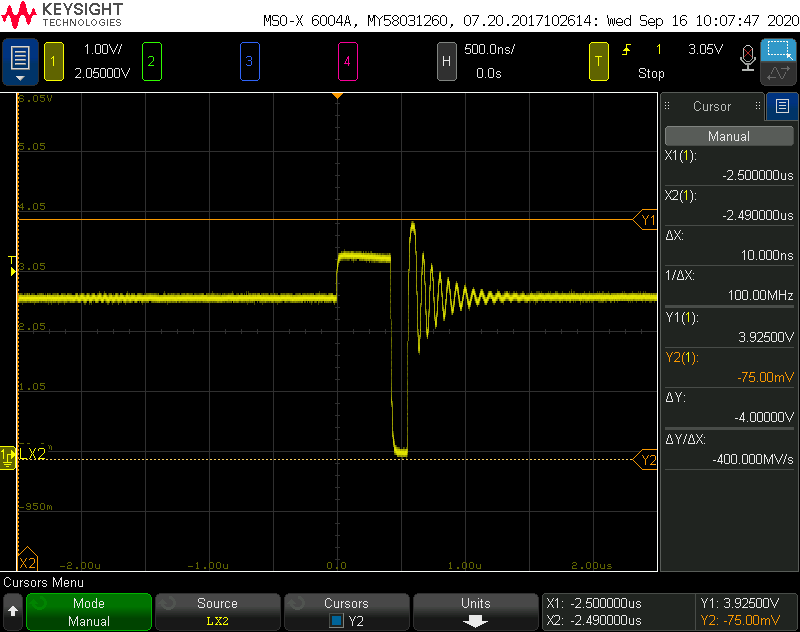Other Parts Discussed in Thread: TPS62826
Hi Sir,
In my knowledge , L value should change to the bigger one , but the result shows change to smaller one is correct.
Could you give me some advices?
If your thought is same as my test result , please teach me the fundamental.
please kindly let us know if there any risk, if the inductor 1u change to 0.47u.
Test purpose:
At low input voltage(3.036V)
Change L1 & C3 then test the output Vp-p , target to lower than 156mV.
But we found the effect of 0.47uH is better than 2.2uH , this result is different to my knowledge.
in the current mode of TLV62585, the inductor value reduce, can the output ripple be reduced?
f your thought is same as my test result , please teach me the fundamental.
If your thought is different as my test result , maybe I have to do extra test.







